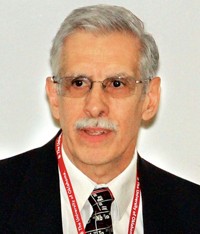Advertisement
Grab your lab coat. Let's get started
Welcome!
Welcome!
Create an account below to get 6 C&EN articles per month, receive newsletters and more - all free.
It seems this is your first time logging in online. Please enter the following information to continue.
As an ACS member you automatically get access to this site. All we need is few more details to create your reading experience.
Not you? Sign in with a different account.
Not you? Sign in with a different account.
ERROR 1
ERROR 1
ERROR 2
ERROR 2
ERROR 2
ERROR 2
ERROR 2
Password and Confirm password must match.
If you have an ACS member number, please enter it here so we can link this account to your membership. (optional)
ERROR 2
ACS values your privacy. By submitting your information, you are gaining access to C&EN and subscribing to our weekly newsletter. We use the information you provide to make your reading experience better, and we will never sell your data to third party members.
Biological Chemistry
Nobel Laureate Signature Award For Graduate Education In Chemistry
by Lila Guterman
February 18, 2013
| A version of this story appeared in
Volume 91, Issue 7
Sponsored by Avantor Performance Materials
Hydrogen peroxide does far more than propel rockets, bleach hair, and clean paper or wastewater. It also causes pathology—and ensures health. For developing and applying new chemical tools to track H2O2 in living organisms, Bryan C. Dickinson, 28, has won this award. He receives the award along with his thesis adviser, Christopher J. Chang, 37, a professor and Howard Hughes Medical Institute investigator at the University of California, Berkeley.
“Bryan’s Ph.D. thesis was a true tour de force spanning organic chemistry to biology,” says F. Dean Toste, also of UC Berkeley.
Dickinson and Chang were interested in studying H2O2 in the brain because the organ is exquisitely sensitive to oxidative stress. Yet cells throughout the body produce reactive oxidative species, Dickinson notes, including in the brain. He and Chang reasoned that peroxide must be necessary for some physiological processes. To understand where and when the body produces H2O2, Dickinson and Chang synthesized a series of boronate-caged probes that would fluoresce in the presence of H2O2.
These probes, which the researchers tuned to create a variety of colors, function in living systems to reveal where H2O2 is produced. Dickinson and Chang also developed probes that are targeted to a cell’s mitochondria (C&EN Online Latest News, July 24, 2008), to its nucleus, or to its cytosol.
Dickinson, Chang, and their colleague Evan W. Miller used the new probes to reveal unexpected roles for H2O2 in biology. In one discovery, they found that certain classes of the ubiquitous membrane proteins called aquaporins can transport H2O2 in mammalian cells. Previously, scientists had thought H2O2 could permeate cells alone and did not use a transport protein.
In another series of experiments, Dickinson and Chang used the probes to show that neural stem cells produce H2O2 and that the molecule then regulates a kinase critical to growth and survival pathways (C&EN, Jan. 10, 2011, page 32). The pair used knockout mice that lacked the enzyme that they identified as the source of H2O2 in the neural stem cells. The knockout mice had fewer proliferative neural stem cells, providing a potential molecular explanation of cognitive deficits observed in these mice. Dickinson says that their work represents an important demonstration of hydrogen peroxide’s benefits to the brain.
“This is just the beginning of some exciting biology,” comments JoAnne Stubbe of Massachusetts Institute of Technology.
Dickinson grew up in Maryland and attended the University of Maryland, College Park. There, he did structural biology research with David Fushman. After finishing his Ph.D. with Chang at UC Berkeley in 2011, Dickinson began a Jane Coffin Childs Memorial Fund for Medical Research postdoctoral fellowship at Harvard University, working with David R. Liu.
Chang has worked at UC Berkeley since 2004. Previously, he earned a B.S. and M.S. at California Institute of Technology, and he earned a Ph.D. and did postdoctoral work at MIT. A young professor who has already earned many honors including the ACS Eli Lilly Award in Biological Chemistry and an Arthur C. Cope Scholar Award, Chang develops chemical tools to study metals and redox chemistry in living systems. He is particularly interested in the roles of metals in the brain and their contributions to neurodegenerative disease.
Chang also develops catalysts for sustainable energy applications. These catalysts speed reactions of consequence to solar-to-fuel conversions, such as water splitting and carbon dioxide fixation. He pursues fundamental molecular inorganic chemistry that works in clean, sustainable solvents such as water.
Dickinson and Chang will present the award address before the ACS Division of Organic Chemistry.






Join the conversation
Contact the reporter
Submit a Letter to the Editor for publication
Engage with us on Twitter